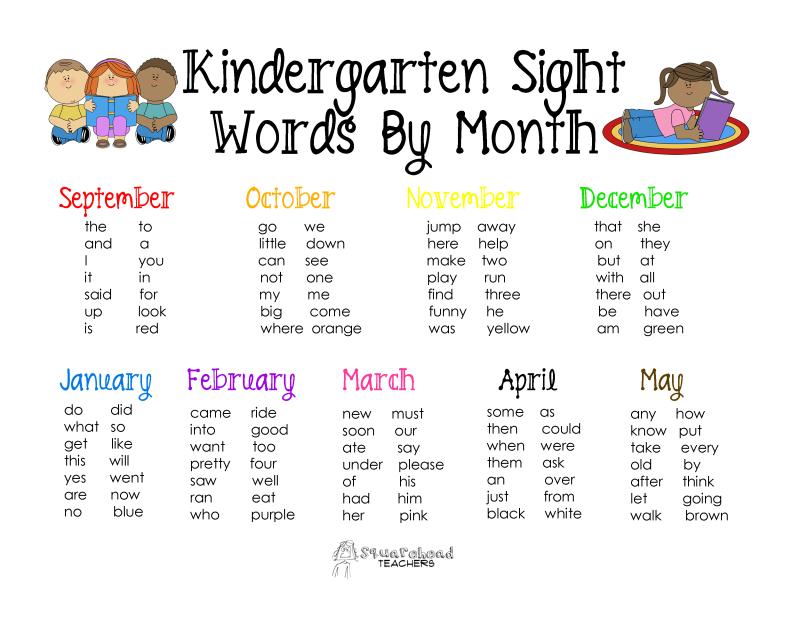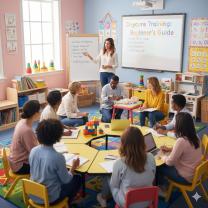How many sight words should a kindergartner know?
The number of sight words a kindergartner should know can vary based on the school, district, or educational program. However, a common goal for kindergarten sight word recognition is often in the range of 20 to 50 words. The emphasis is not solely on the quantity of words but on the ability of the child to recognize and read these words fluently.
By the end of kindergarten, many educators aim for students to:
Recognize High-Frequency Words: Kindergartners should be able to recognize and read common high-frequency words that are frequently used in early reading and writing activities.
Read Basic Sentences: Kindergartners are typically encouraged to read basic sentences containing sight words, allowing them to apply their knowledge in context.
Use Sight Words in Writing: In addition to reading, kindergartners should be able to use sight words in their own writing. This might involve spelling these words correctly when writing simple sentences or short stories.
Demonstrate Fluency: Kindergartners should demonstrate a growing level of fluency in recognizing and reading sight words. Fluency involves reading with accuracy, appropriate speed, and expression.
Apply Sight Words in Simple Texts: Kindergartners may be introduced to simple, decodable texts that include sight words, allowing them to practice their reading skills in the context of a broader story.
It's important to note that the primary goal in kindergarten is to build a foundation for literacy and to foster a love for reading. Teachers often use a variety of activities, games, and strategies to make learning sight words engaging and enjoyable for young learners. Additionally, individual progress can vary, so expectations may be adjusted based on the needs and development of each child. Regular communication with the child's teacher can provide insights into specific goals and progress.
Setting literacy goals: How many sight words should a kindergartner know?
The number of sight words that a kindergartner should know depends on a number of factors, including their individual development, the curriculum they are following, and the expectations of their school and district. However, a general guideline is that kindergartners should know between 20 and 100 sight words by the end of the year.
Some experts believe that it is more important for kindergartners to have a deep understanding of a smaller number of sight words than to have a shallow understanding of a larger number of sight words. Others believe that it is important for kindergartners to be exposed to as many sight words as possible so that they can start to build a strong foundation for reading fluency.
Ultimately, the best way to set literacy goals for your kindergartner is to talk to their teacher. They can help you assess your child's individual needs and create a plan that is right for them.
Benchmarks and expectations for sight word recognition in kindergarten
Here are some benchmarks and expectations for sight word recognition in kindergarten:
- By the end of the first quarter: Kindergarteners should be able to recognize and read at least 20 sight words.
- By the end of the second quarter: Kindergarteners should be able to recognize and read at least 40 sight words.
- By the end of the third quarter: Kindergarteners should be able to recognize and read at least 60 sight words.
- By the end of the fourth quarter: Kindergarteners should be able to recognize and read at least 80 sight words.
It is important to note that these are just benchmarks and expectations. Some kindergartners may learn sight words more quickly or slowly than others. The most important thing is to provide them with plenty of opportunities to practice and to be patient and supportive.
Tips for tracking and supporting kindergartners as they learn sight words
Here are some tips for tracking and supporting kindergartners as they learn sight words:
- Create a sight word list. At the beginning of the year, create a list of sight words that your child will be learning. This will help you track their progress and identify any areas where they may need additional support.
- Use sight word flashcards. Flashcards are a great way to help children practice recognizing and reading sight words. Have your child practice with their flashcards every day for a few minutes.
- Play sight word games. There are many different sight word games that you can play with your child. These games can help make learning sight words more fun and engaging.
- Incorporate sight words into other activities. Look for opportunities to incorporate sight words into other activities that your child enjoys, such as reading, writing, and playing. This will help them learn to use sight words in a meaningful way.
- Talk to your child's teacher. If you are concerned about your child's progress with sight words, talk to their teacher. They can provide you with additional support and resources.
By following these tips, you can help your kindergartner learn sight words at their own pace and succeed in their reading journey.











